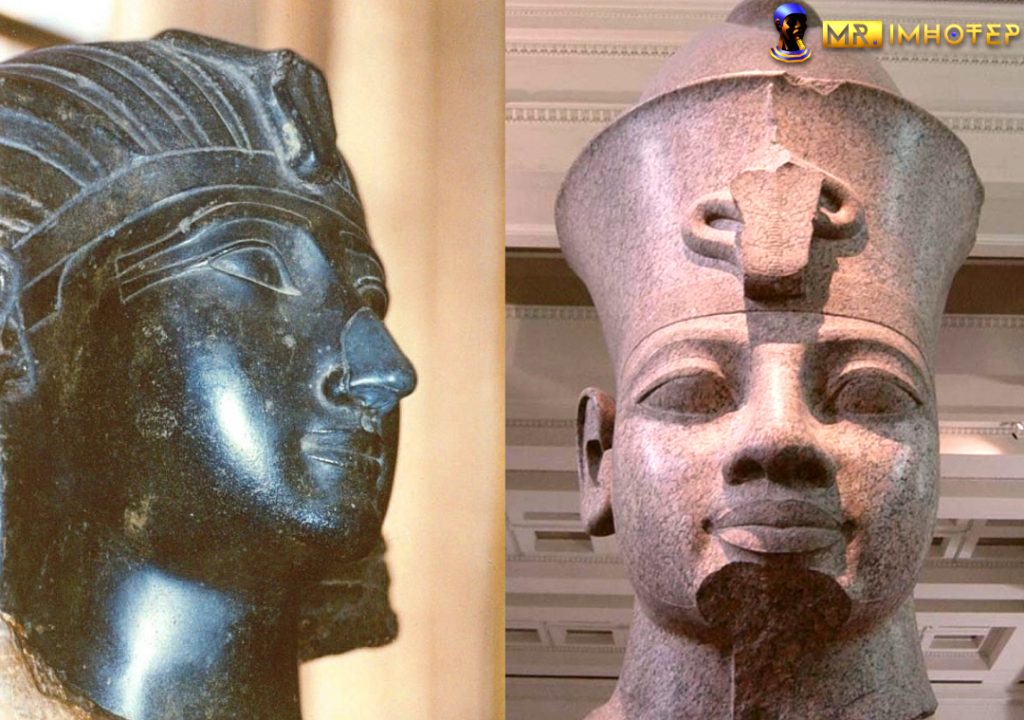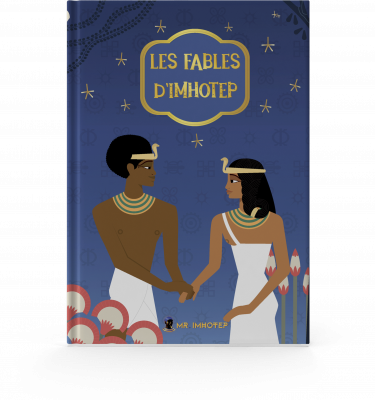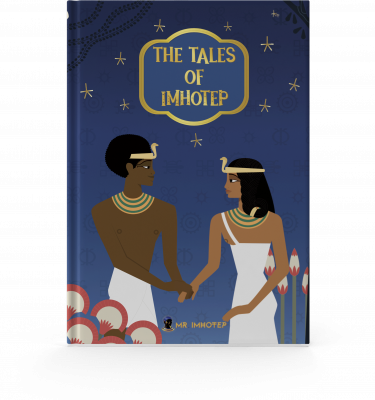The time period
According to the info we got first, the mummy was supposed to date back to the first pharaohs. And as we already noticed it in the first article, it did not make sense. There was already a lie in the tale. And as we expected it, we were right. The sarcophagus date back to the 26th dynasty, which is also known as the Saite Dynasty, during the late period. It is known by many scholars as the last native dynasty to rule Kemet before the Persian conquest in 525 BC. But it is more complicated than that. The rulers of that dynasty were related to the rulers of the 24th dynasty, a short-lived group of pharaohs who had their capital at Sais in the western Nile Delta. They were a group of rulers who controlled Kemet during the end of the Third Intermediate Period, from the city of Sais in the North of Kemet (Lower Kemet) before the arrival of the Nubian rulers of the 25th dynasty who brought back the power to original rulers of the country, the Thebans (Upper Kemet).
These facts are important to know because that time period was very complicated for the Africans of the Nile valley. It was a period of major political shifts. The country was going to its death. According to most scholars, the last Great Native Pharaoh of Kemet was Ramses III, ruler of the 20th dynasty. He ruled many centuries before the 26th dynasty. And we believe that the last Great Native African ruler of Kemet probably belonged to the 25th dynasty. The Nubian rulers of the 25th dynasty controlled the largest empire that existed in the Nile valley. Their territory stretched from central Africa to the European Mediterranean coast. An achievement that none of the native rulers of Kemet had ever accomplished.
But what is even more interesting here is the reason why the Nubian Kings decided to move up North and control Kemet. According to mainstream scholars, the Nubians were a people of slaves who ended up conquering their ancient masters. You can see it in the following video starting at the 36th second. The story is told in a way that introduces the Nubian Kingdom as a very minor Kingdom. This maintains the illusion that black people did not accomplish anything in Africa. And that all they did was to invade the country of their “masters”. And that action is introduced as their most important achievement…
This documentary has created so much controversy because of its content and its name: Rise of the black pharaohs, that the scholars who participated to its creation had to apologize publicly.
The true story is completely different from what is told in that documentary. We are taught that the Kushite kings (Nubian Kings) decided to invade Kemet because of a feeling of revenge. And that is what most people believe today. Mainstream scholars and media always depict the Kemites as a non-African people with black African neighbors in the south. So, the Kushites and Nubians are always portrayed as blacks and inferiors while the Kemites are seen as whitish or Asiatic. And in order to maintain that fake narrative, it is important to tell the story in a way that introduces the Nubians as slaves, inferiors, and enemies. But that is very far from the truth. The Nubian people (the black Africans) were the closest people to the Kemites. They were seen as brothers, even though from time to time the ancient family rivalries reappeared. But the Kemites knew and stated that their family was in the south and nowhere else.
The Kushite ruler Piankhi (Piye) conquered Kemet and about 730 BCE raided Lower Kemet. And completed the conquest of the whole Nile Valley. But what scholars don’t tell people, is why the Kushites conquered Kemet. Contrary to what is said in that documentary, the priesthood and the aristocracy of Thebes who are the true rulers of Kemet were very closely related to the Nubians. The Thebans are the ones who always fought the invaders and liberated the country from foreign occupation. And during the 24th dynasty (late intermediate period), a period of turmoil, they needed help. The country was falling under the power of the northern people who were less and less African due to the numerous invasions that occurred in that region and of the foreign influence that was growing there.
They knew that the Nubian rulers in the south were true Africans. They shared the same origins and the same original Nubian culture. The rulers in the North were not under the Africans influence anymore. They had lost their connection to their ancestors and became highly mixed to the people who were the enemies of the nation. Their rule was seen as an affront to the Theban aristocracy who knew that in order to be a pharaoh and rule that country, one had to come from the womb of a Nubian woman as stated in the Prophecy of Neferti. And the Kushite rulers fulfilled all the criteria mentioned in that prophecy. Which made them the perfect choice because at that time Kush was experiencing a true golden age.
Something that very few know today, only true Africans could rule that country. So, Piye got the blessing of the ruling class before conquering the land. He even stated that his mission was divine. That he came (as stated in the prophecy) from the south to liberate the country from the invaders. And that’s why his conquest of the land of the pharaohs (Upper Kemet) was very easy. He only had to fight the Northern people (Lower Kemet) because they were the real foreigners. Many sources even prove that they were not identifying themselves as Kemites anymore. The battle was already lost in the minds. The Kushites considered the Libyanized Lower Kemites cultural degenerates, but they felt a strong affinity for the Thebans, who were also worshipers of Amen.
And this last fact is the reason why according to the time period, that discovery is not relevant to the history of Kemet. The 26th dynasty that came after the Kushite 25th dynasty was related to the 24th dynasty that has been defeated by the Kushite kings. The Libyan invaders who took advantage of the troubles that were occurring in the north to gain more power. They were the same group of Libyanized rulers who took over the country once again after defeating the traditional rulers of Kemet, the Nubians and Nubian related populations of Upper Kemet and deep Africa. They are not representative of the real pharaohs, priesthood, and aristocracy of Kemet.
The location of the tomb
We know that the 26th dynasty ruled from the city of Sais. A city located in the Western Nile Delta on the Canopic branch of the Nile. But if you know the true history of Kemet, you probably know that the Delta region became important later in the history of Kemet. The land of the ancestors was in the south, between upper Kemet and Nubia (Sudan). All the great pharaohs of Kemet were systematically buried in the south, in the famous valley of the Kings. Ramses II, Thutmose III, Amenhotep III, Tuthankamen, Ramses III or Seti I are all buried over there. When a ruler or an individual was buried in that valley, it meant that he was really important and was connected to the indigenous rulers of the country. It was an honor that only the most powerful people could have. That tradition changed when the power ended up under the hands of foreign groups.
The mummy discovered here was buried in an ancient cemetery located south of Cairo. For those who don’t know it, Cairo is located in the north of Egypt, which means that it belongs to Lower Kemet. The land of migrations and invasions. The Encyclopedia Britannica even called these rulers of Lower Kemet “Libyanized Egyptians” which proves that they were not really Kemites (native African Egyptians) anymore. They were seen as foreigners by the natives themselves back in the days. So, anything that is discovered in that region, and especially during those time periods, should be seen as a minor discovery. These are facts that mainstream scholars and media don’t tell you. And that’s why we are trying to make you understand the truth about each discovery about ancient Kemet.
The Origin of that mummy
When discovered by Josh Gates and Zahi Hawass, the mummy was still wrapped in linen. We could not see its face and no genetic analysis has been done. But as we know now. Lower Kemet was the land of migration and has been under foreign occupation for millennia whereas Upper Kemet remained under the rule of the true natives during the whole existence of the Kemetic civilization until its end. The 26th dynasty was made of Asiatic and Lybian people. This means that if scholars want to make major discoveries, they should focus in the south. That mummy can’t be used to make any major statement about the ancient Kemetic civilization because it has been discovered in the north.
Psamtik I was the first king of the 26th dynasty and he is known to be an Egyptianized Libyan. He was the son of Necho I who had been one of Esarhaddon’s (the Assyrian King who invaded Kemet) vassals. No native Kemite would have ever accepted to be vassal of foreign people so easily. It was an opportunity for these Libyan people to control Kemet and take the throne. It was also a great opportunity for the Assyrians who hated the natives of Kemet. Psamtik is known as the pharaoh who proceeded to establish close relations with archaic Greece. He encouraged many Greek settlers to establish colonies in Kemet and serve in the army of Kemet. In particular, he settled some Greeks at Tahpanhes (Daphnae). This, in purely indigenous African and Kemetic point of views, can be seen as treason. Because the army of Kemet was traditionally made of Kemetic natives combined with Nubians. Traditionally, the pharaohs’ closest guards were the Medjay. And the Medjays were Nubians. In other words, the security of the pharaoh was the responsibility of the black Africans of the south. But Psamtik broke that tradition and completely opened the doors to foreign influences over the country.
Nubians have always been members of the ruling class of Kemet. They were the ruling class.
His choice is understandable if we look at history. He did not come from the south, he was not a true Kemite, he was Libyan in origin. He did not belong to the original ruling class of Kemet. That’s why he put more confidence in foreigners than in the real natives. And we know that the original ruling class was Nubian related, which explains why the army had always been full of Nubians. Because no country will give the ministry of Defense to foreigners or enemies. It is one of the 3 most important ministries in every country and it is always controlled by natives or close friends of the people in power.
He also knew that the Theban aristocracy was not really happy about this power shift within the country. It was going against the traditions. The traditions were the root of that civilization. With him, foreigners started to call themselves pharaohs. That’s probably one of the reasons why he could not follow these traditions and let traditional Nubian influence rise again in the country. It could end his dynasty’s control over the country. It was better to use foreigners than to use true native Africans (Kemites). Many African scholars believe that Psamtik I’s choices not to fully respect the traditions highly contributed to the fall of the Kemetic civilization because the people who migrated, did not follow the great laws of Ma’at that were at the root of the longevity of Kemet. It was the end of the rule of the original Kemites (ancient Egyptians).
All these factors explain clearly why that mummy as well as most mummies that are discovered in the North can’t really be seen as symbols of ancient Kemet. That’s why we believe that this discovery may be very interesting for all the people who love African History or the history of Kemet, that it helps promote tourism for the country of Egypt. But in a purely Kemetic point of view, it is irrelevant. That’s the reason why episodic history is dangerous. Because it omits to express the context of each discovery and stories. When mainstream media announce new discoveries, they rarely tell people the context of these discoveries. Sometimes it is done to catch the attention of the audience. But that technique also keeps people into darkness. Now, I would like you to do some research for yourself. I want you to pay close attention every time that you hear about new discoveries about ancient Kemet. Especially when these findings are highly shared by mainstream media. Try to always question the location and the time period. I guarantee you, that you will notice that most of these discoveries date back to the late periods and are most of the time located in the North. Why? Especially when we know that the true aristocracy lived in the south… The answer is simple. Because the people of the south remained black until today and that the further we go back in time, the blacker they get. And the mummies and tombs located in the south belong to black Africans. And they don’t want you to understand that ancient Kemet was a true black African civilization. That’s why they spend their time digging in the north and showing faces of secondary individuals that they introduce as powerful Kemites.








